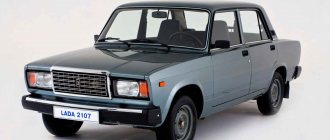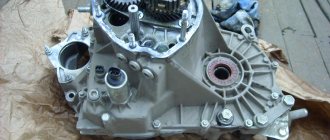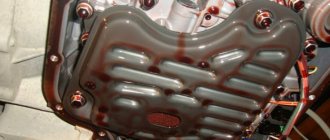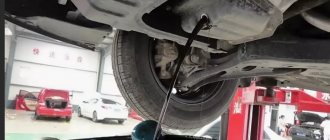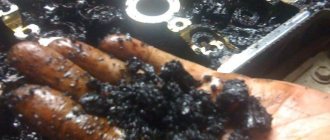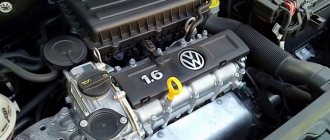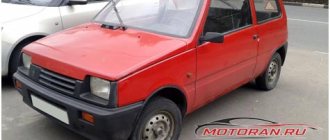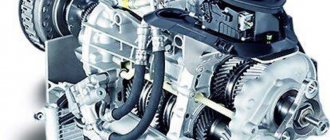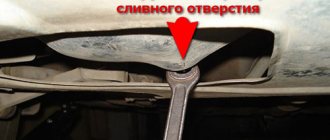"LADA Kalina" are popular domestic cars in sedan and hatchback bodies, which were produced by AvtoVAZ OJSC from 2004 to 2013. Then the second generation models were launched into production - LADA Kalina 2 (hatchback and station wagon body styles). Changing the oil on Kalina is a mandatory procedure carried out during routine maintenance and largely determines the reliability and durability of the vehicle.
The rules for the maintenance of cars of the Kalina family (first and second generations) require periodic replacement of used motor oil, in common parlance “working out”, in power units and stipulate that it should be carried out no later than through:
- 3000 km (first replacement);
- every 15,000 km traveled or once a year thereafter.
Getting ready for replacement
Changing the oil in the Lada Kalina engine can be carried out not only during scheduled maintenance, but also when it is discovered that its volume in the engine crankcase has decreased significantly. Control is carried out using a special probe.
The volume is considered sufficient when the oil mark on the dipstick is located between the MIN and MAX marks. If it is located below the MIN mark, then the engine oil needs to be added, and if the MAX mark is higher, then drain off the excess. In both cases, it is necessary to identify the reasons that led to such a picture and eliminate them.
2302-3-2-07-a-02 (Copy)
Attention! Be careful - the oil is hot and harsh on the skin.
Drain the oil until it begins to drip from the drain hole. After wiping the plug and removing any remaining dirt from its thread, we wrap the plug in place. We remove oil leaks from the engine oil pan. We place the waste oil container in the area where the oil filter is located and unscrew it, rotating it counterclockwise. If this cannot be done manually, use a puller. To avoid damaging the sensor wiring harness and the crankshaft position sensor itself.
What kind of oil to pour
Recommendations of AvtoVAZ OJSC regarding types of motor oils are given in the operating manual for the LADA Kalina car and include more than 18 products from various manufacturers. All of them are certified in the Russian Federation and have the appropriate viscosity grade (SAE classification).
Among owners of LADA Kalina family models, the most popular are semi-synthetic oils produced by Shell, Mobil and Lukoil.
Tools and materials
To change the oil, you will need to prepare a standard set of tools and materials.
This list includes:
- hexagon size 12;
- rags;
- funnel for pouring fresh oil;
- empty container for draining waste;
- socket or socket wrench 17;
- oil filter puller;
- personal protective equipment to avoid getting burned by hot oil;
- new filter;
- fresh engine lubricant.
Engine oil volume
The amount of engine oil to be filled is almost the same for all engines of the Lada Kalina car. Its volume is 3.5 liters. An exception is the VAZ 21126 power unit, in which the amount of lubricant filled depends on which gearbox (gearbox) it is equipped with:
- Manual transmission – 3.2 liters;
- AMT robotic gearbox - 4.4 liters.
In addition, you need to take into account that when replacing the oil filter, about 300 ml of engine oil is poured into it, so the total amount will be less than that indicated above.
Instructions
- We warm up the engine to 45-50 degrees. Warm oil has better fluidity and will drain better from the engine during a complete replacement. Our task is to remove as much as possible the old dirty and used fluid that no longer has useful properties from the engine and fill it with new one. If a lot of old dirty oil remains in the crankcase, it will be swept away with the new one and will worsen its beneficial properties. Warm up the engine for 5-7 minutes before starting, this will be sufficient.
- For easy access to the drain plug (and in some models the oil filter is also attached from the bottom) and the bottom of the car as a whole, you need to jack it up or drive into an inspection hole (the best option). Also, some models may have engine crankcase “protection” installed.
- We open air access to the crankcase by unscrewing the filler cap and dipstick.
- Place a large container (equal to the amount of oil being poured).
- Unscrew the drain plug with a wrench. We unscrew the drain plug of the Lada Kalina with a 17 key to drain the used oil. Don't forget to wear protective gloves, the oil will most likely wake you up warm, but you need to be careful.
- We wait about 10-15 minutes until the waste flows into a basin or cut-off plastic canister.
- Optional but very effective! Flushing the engine with a special liquid is not included in the maintenance regulations and is not mandatory - but. By getting a little confused, you will be much better at flushing out the old, black oil from the engine. In this case, wash with the old oil filter for 5-10 minutes. You will be surprised at the black oil that comes out with this liquid. This liquid is very easy to use. A detailed description should appear on the flushing fluid label.
- Changing the sedum filter. Impregnating the filter with new oil before installation is a mandatory procedure. Lack of oil in the new filter before starting the engine can cause oil starvation, which in turn can cause filter deformation. Overall this is not a good thing. Also remember to lubricate the rubber O-ring before installation. Sometimes the oil filter does not want to rotate with one hand, in which case you need to use a special puller. If this is not the case, then you can use an emery sheet, wrap it around the filter and try to turn it by hand.
- Fill in new oil. Having made sure that the drain plug is screwed in and a new oil filter is installed, we can begin to fill in new oil using the dipstick as a guide. The level should be between the minimum and maximum marks. Also, you need to remember that after the first start of the engine, some oil will leave and the level will drop.
- In the future, when the engine is running, the oil level will probably change; be careful during the first few days of operation. Recheck the oil level using the dipstick after the first start.
Air filters
These filters are used in Kalina to clean the air entering the cabin and engine. Both filters are made of paper and do not last very long; their service life depends on where the car is used. If the car is used on gravel or country roads, the service life of these filters is sharply reduced.
Engine air filter
This filter is installed in the engine compartment in a special box and serves to clean the air necessary for the operation of the internal combustion engine, which is subsequently mixed with fuel to form a fuel mixture.
The filter must be replaced every 30,000 km, but if the car is used on dirt roads, it is best to replace this part with a new one a little earlier at 20,000 km.
Symptoms of a clogged engine air filter
When the air filter in a car becomes clogged, the following symptoms appear:
- Engine power is lost;
- Engine starting deteriorates;
- The car engine stalls spontaneously;
- No idle;
If such symptoms appear on your car, you need to check the air filter for frequency; if it is very clogged, and you don’t have a new filter at hand, you can pop it and put it in place. This will be enough to complete the train and buy a new filter.
Replacing the Kalina air filter
- Unscrew the 4 bolts securing the air filter box cover and remove it;
- Install a new filter and close the lid;
Cabin filter
It is installed in front of the stove fan and serves to protect it from debris, as well as to clean the air from harmful gases and various odors. The cabin filter also helps protect air ducts from contamination.
Symptoms of a clogged cabin filter:
- The flow from the air ducts becomes noticeably weaker;
- The stove or air conditioner loses its effectiveness;
- An unpleasant odor appears from the air ducts;
If such malfunctions are detected in your car, you need to clean or replace the cabin filter.
Replacing the Kalina cabin filter
How often does the filter need to be changed?
This period is considered fixed and depends on the distance the car travels. The optimal range is 15,000 kilometers. Although there are experts who claim that other characteristics of the vehicle’s operation also affect the replacement. Thus, a more urgent need for an oil change may arise if long trips were made on poor-quality road surfaces. It can be affected by changes in vehicle consumables, sudden changes in temperature conditions and an aggressive environment. If such circumstances exist, the period during which the Kalina oil filter is changed can be equal to 10,000 kilometers.
Preparing the car for changing consumables
Any manipulations with the elements of the fuel line are carried out after comparing the pressure in the line with atmospheric pressure. After stopping the engine, the fuel in the line is still under pressure. It can be bled only after de-energizing the power supply circuit of the fuel pump module. This procedure is carried out as follows:
- turn off the ignition;
- remove the cover of the central tunnel lining using a flat screwdriver (forms the bottom of a niche for small items near the cigarette lighter);
- remove the 15 A fuse responsible for power supply to the fuel pump (second from right to left) from the fuse box located under the removed cover of the power supply and engine control system;
- turn on the ignition (there will be no usual buzzing from under the rear seat) and start the engine;
- After the engine stops spontaneously, crank the starter for 5 seconds.
You can prepare the Kalina fuel system for filter replacement in an alternative way:
- remove (on a sedan) or fold down (hatchback and station wagon) the rear seat;
- remove the fuel pump hatch, which is attached to the bottom with two self-tapping screws;
- disconnect the wiring block from the fuel pump module with the ignition off;
- start the engine;
- After running out of fuel, crank the starter for 5 seconds.
DIY car repair and maintenance
Step-by-step plan for replacing the CV joint (grenade) So, the grenade (both internal and external) on front-wheel drive models of domestic cars (God forgive me) starting from the VAZ 2108 and ending with at least 2115 is the same (well, maybe different manufacturers and different final service life). The same principle applies to Priora, Kalina and Grant.
Greetings, dear visitors! I want to devote this article to replacing the external grenade. If you follow the sometimes unclear terminology (which I don’t always like) - replacing the constant velocity joint, i.e. CV joint. I try to write my articles in everyday language, in which people ask for information.
The photo above shows a damaged Lada 2114, already repaired. The front right side, which we are repairing, was collected in a heap by a frontal impact along with the entire front end (look at the gaps between the parts after the repair, in my opinion, the repair was done perfectly). Looking under the front right wheel I noticed that the drive was bent.
If you don't loosen it while the wheel is on the ground, it will be very difficult to unscrew it later. After which, I jacked up the car completely and removed the wheel and unscrewed the grenade nut. There is a washer under the nut (don't lose it, as the new CV joint doesn't come with one).
Next, you need to unscrew the ball. This can be done by unscrewing two 13mm bolts, or you can unscrew the bottom nut of the pin by 17mm and knock it down by pressing it down with a pry bar, while simultaneously tapping it with a hammer (not on the pin or ball), which is what I actually did. Additionally, release the brake caliper hose.
By moving the hub to the side (having previously pushed the grenade inward with the mounting tool and pulling the hub towards us), we release the outer grenade, which we would simply replace without pulling out the entire drive along with the inner CV joint,
...if it weren't for the drive that was bent into a ram's horn. And you see the fate of the outer grenade in the photo - it crumbled.
So, let's replace the drive too. The photo below shows a CV joint from an Italian manufacturer called TRIALLI (Trialli) for 900 rubles. Quite a cheap product of very good quality.
And the photo below illustrates the components of the CV joint:
- The grenade itself.
- Two clamps.
- Protective cover (boot).
- Retaining ring.
- A tube of special lubricant (calculated for the entire service life of the hinge, if the case remains intact all this time). There is another cheap but excellent CV joint - 4 for lubricating a grenade for 50 rubles in any auto store
- Hinge nut.
Since we were changing the drive, we had to knock off the support washer from it and replace it with the new drive, which should fit clearly into the lower groove (photo below). In theory, they should be installed on the new drive anyway. After that, put on the boot and lower it into its seat.
And install the retaining ring. If it is too stretched, first squeeze it and place it in the upper groove. The easiest way to do this is with cone-shaped pliers, inserting them inside the ring and stretching the ring to fit it into the groove. And then, using a special wrench or simple pliers, tighten the lower clamp, but do not tear it off.
Next, you need to inspect the inside of the hinge for any flaws or debris. Then fill it with lubricant. Insert the neck of the tube into the separator, press it firmly and press the lubricant until it comes out through all the cracks. Usually almost the entire tube fits there.
Where should you start replacing?
You should start by opening the part of the engine that is located below. Next, take a container under the used oil and apply it directly to the open part of the engine. It is important to wait until the oil is completely drained. Next, you need to disconnect the harness block from the sensor, or rather from its connector. After that, using a special tool, the casing is disconnected, from which an element is taken out that has already served its purpose. It is important to inspect the perforated tube as it will continue to function until the next routine replacement of this consumable. At this stage, it is important to inspect and carefully check all connecting units and components, so if necessary, you need to replace gaskets and other elements if they are worn out.
Replacement of front brake pads LADA "Kalina"
Brake pads, like car tires, wear out as you drive and require periodic replacement. The peculiarity of the car’s braking system is that the load during braking is unevenly distributed on the front and rear axles. The front wheels, and, accordingly, the brake pads, experience greater loads than the rear ones. This means that they also have to be changed much more often. The front brake pads on Kalina are replaced two to three times more often than the rear ones. To do this, you can contact specialists or do the work yourself. In the latter case, you must have a set of standard tools and new front brake pads. The procedure for replacing front pads on a Kalina equipped with and without ABS is the same.
How often should you change the front pads of LADA “Kalina”
- retaining brackets and springs;
- brake hoses;
- cuffs, seals and boots of brake cylinders;
- brake discs; adjusting rods;
- brake pad mounting parts.
With use, these elements wear out, faults accumulate in them and cause uneven or accelerated wear of the brake pads. The service life of the pads is shortened by the chemicals that are sprinkled on the streets in winter to prevent the formation of ice. Therefore, even the designer of the Kalina will not be able to name the exact mileage after which the pads will need to be replaced. The need for replacement is determined by another criterion - the thickness of the friction linings. If they are thinner than one and a half millimeters, the pads must be replaced.
Signs of the need to change the oil on Lada Kalina
There are also reasons for changing the oil that are not related to regulations. The nature of these symptoms varies and most often leads to an oil change:
- spontaneous engine shutdown;
- difficult starting;
- active lamp on the instrument panel;
- blue smoke from the exhaust pipe;
- increasing the operating temperature of the power plant;
- Increased noise during operation, vibration appears.
Before you start replacing the lubricant, you should check the dipstick. Checking the oil level is done after the machine has been idle for a long time, preferably in the morning. The liquid must not be cold. The car must be on a level surface.
Then you need to lower the dipstick into the neck - the level should be above the Min mark. Next, you need to drop the oil onto the paper and let it spread. Too dark color and dirt indicate the need for replacement.
Markings
Let's look at oil manufacturers, as well as markings that can help you find out whether Lada Kalina supports a particular oil.
- Lukoil Lux. SAE class – QW-40, 10W-40, 5W30; group – SL/CF
- Luxe Hit/Best. SAE class – 10W-40; group – SL/CF
- Novile Super. SAE class – 5W-30, 20W-50, 15W-30; SJ/CF
- Rosneft Maximum/Premium. SAE class – 5W-40, 10W-40, 5W-40; SL/CF
- Tatneft Synthetic/Ultra. OW-40, 5W-30, 5W-40; SM/CF, SL/CF
- Esso Ultra. 10W-40, SJ/SL/CF
- Mobil 1.OW-40, 5W-50, 10W-40; SJ/SM/SL/CF
- Shell. 5W-40, 10W-40; SL/CF
- ZIC A. 5W-30, 10W-30; SL
As you can see, Lada Kalina owners have a wide selection of oils with different classes and standards. Based on these standards, a car enthusiast can safely fill in any oil from the specified list.
What happens if the replacement is untimely?
If operation without replacement exceeds 15-20 thousand km, the consequences will be negative. The liquid becomes cloudy and its density increases. As a result, it does not perform its functions, and in particularly advanced cases it even complicates the operation of the engine. The result is jamming and expensive repairs.
- engine overheating;
- the need to replace gaskets and seals;
- the appearance of defects on the cylinder head;
- oil enters the combustion chambers.
If there are minor discrepancies with the technical regulations, there will be no serious problems. There is a technical reserve of up to 1500 km. The oil will still retain its properties, but not to the same extent. There is an increase in friction and wear of the piston group.
